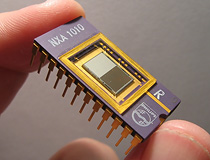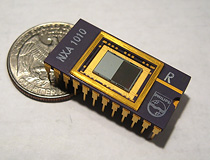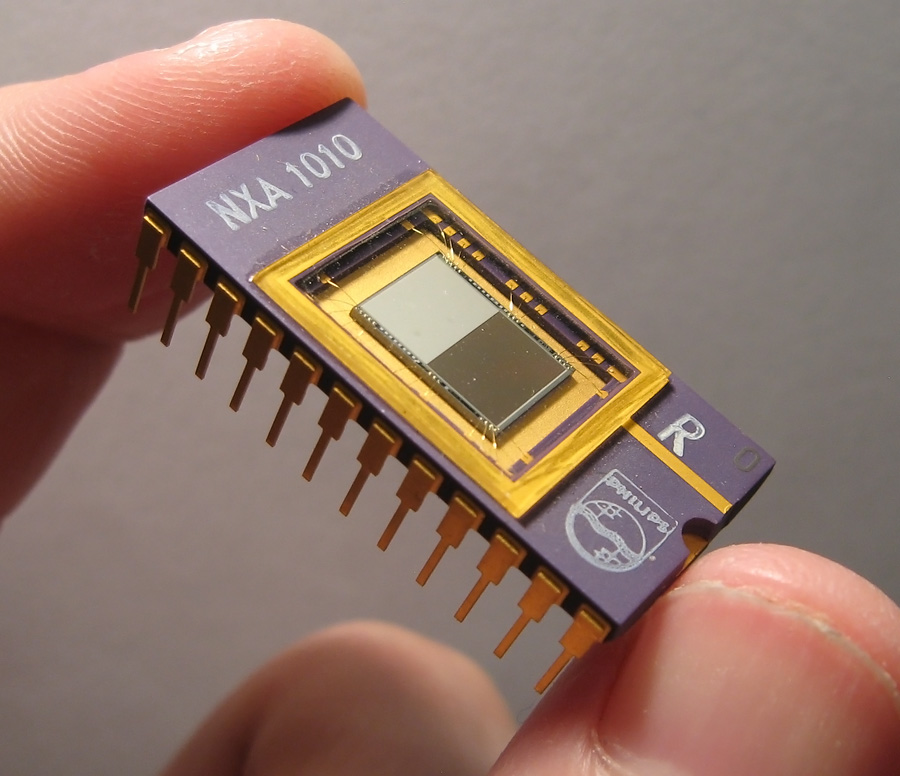The Philips NXA1010 is a 604 x 575 line CCD image sensor designed for use in monochrome PAL video cameras. The NXA1010 is a frame transfer CCD; only half of its light-sensing surface is used for generating images, the second half of the CCD area is set aside as a frame buffer storage area. On the CCD die this storage area is easily visible, as the half of the CCD set aside for frame transfer has been covered with an opaque barrier material. The pixel rows in the CCD sensor area are organized into parallel shift registers, which allows a captured image to be quickly 'slid' under the barrier material for safekeeping until it can be transferred off of the CCD die. The additional length added to the die for the frame transfer area makes it too large to fit in a normal DIP package; the NXA1010 makes use of a modified 24 pin ceramic carrier with an elongated cavity to provide the extra room needed. The NXA1010 is believed to have been released in 1984.
Philips also produced the NXA1020, a same-resolution device that was capable of producing color output. The NXA1020 uses an identical CCD, but includes a color bar filter which has been bonded to the CCD's surface.






 Return to Monolithic Integrated Circuits
Return to Monolithic Integrated Circuits